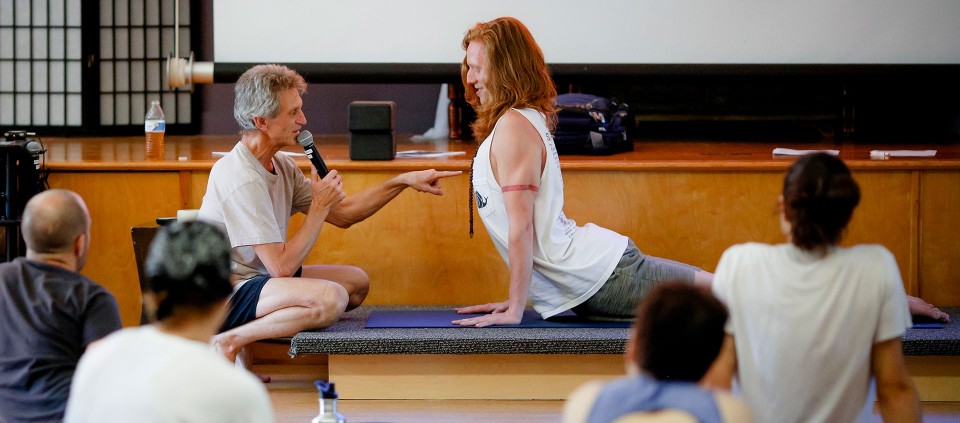Yoga to Stoke Your Inner Fire

Prana is the fire of life, the energy that fuels us. Swami Kripalu taught that there are two kinds of fire: kamagni and yogagni. Kamagni is the fire generated by life stressors: You get a flat tire, the boss wants to see you in their office, your teenager gets in trouble at school. Yogagni, on the other hand, is the fire produced by the inner work of yoga—pranayama and postures. This yoga fire opens us to another realm, to a sense of universal oneness that dissolves the boundaries that typically define us.
How do we stoke this “yoga fire”? All yoga practices raise and activate prana. After a yoga practice, we feel more open, expanded, and free—that’s prana flowing through us. As we become more experienced practitioners, we can make choices that modulate the intensity of prana; we can choose to do less, or to go deeper with more vigorous, intense practices.
According to the classic text Hatha Yoga Pradipika, the yogi should “practice to know the prana perfectly.” It’s important to learn this discrimination in order to remain stable and comfortable in your practice: If you stir up more prana than your bodymind can digest or assimilate, it can leave you feeling anxious and jittery. That’s when we tend to reach for a cookie or turn on the TV—these are ways to dampen the fire when it’s too hot to handle. Yoga is intended to be a developmental process, in which we advance by degrees—moving gradually closer to the fire in order to get warmer, but not close enough to get burned.
To make this journey safely, we must each take responsibility for understanding our own temperament and the effects that asana and pranayama have on us. Through self-awareness, we strengthen our container. In Ayurveda, this steadiness is known as sattva—a balanced, harmonious state in which our physical and emotional needs are met. From this place, we can begin to slowly turn up the heat.
As you experiment with this, notice how your practice on the mat impacts you off the mat—in other words, how yogagni affects kamagni. Sometimes we need to move away from the fire outside in order to spark the fire inside. But raising our energy also changes how we show up in life. For example, practicing Kapalabhati might increase your feeling of aliveness and also make you more energetic and sociable. When we look at the contrast of these two types of fire through the lens of the yamas and niyamas, we see that much of the kamagni we experience comes from a place of striving, violence (toward others or oneself), or untruth. The fire of yoga—when it glows with clarity and steadiness—can burn away what does not serve us.
Guidance for Stoking the Fire
- Start with a practice in which you are stable and comfortable—one you can do every day. The stability becomes a base that you can work from as you gradually increase the heat.
- Make the practice one you enjoy, in order to maximize the possibility that you will do it regularly. If it feels like work, it’s less likely that you’ll continue.
- Prioritize frequency over length of practice. It’s better to do 15 minutes every day than an hour a couple of times a week. Your practice can be as simple as taking several deep, slow breaths; doing a Sun Salutation or three postures that open your body and reduce stress; and sitting for a few minutes of meditation.
- Begin each practice with a centering that focuses your attention and clarifies your intention. Acknowledge and honor this time as a sacred space, set apart from other daily activities.
- Incorporate energy-raising practices very gradually. Every change in your practice should come from a place of stability.
Find out about upcoming programs with Yoganand Michael Carroll at Kripalu.
© Kripalu Center for Yoga & Health. All rights reserved. To request permission to reprint, please email editor@kripalu.org.
Yoganand Michael Carroll, E-RYT 500, senior faculty member for the Kripalu School of Yoga, has a profound ability to distill and interpret esoteric yoga texts and techniques.
Full Bio and Programs